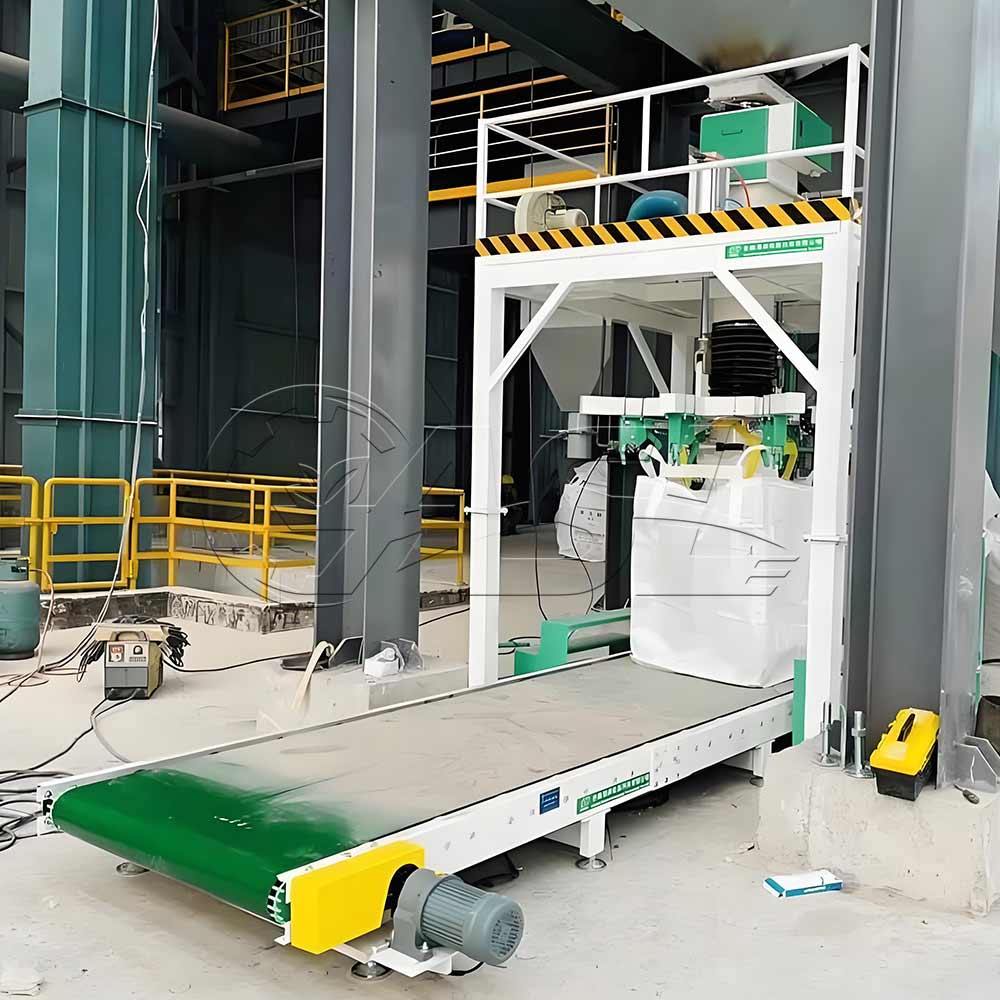

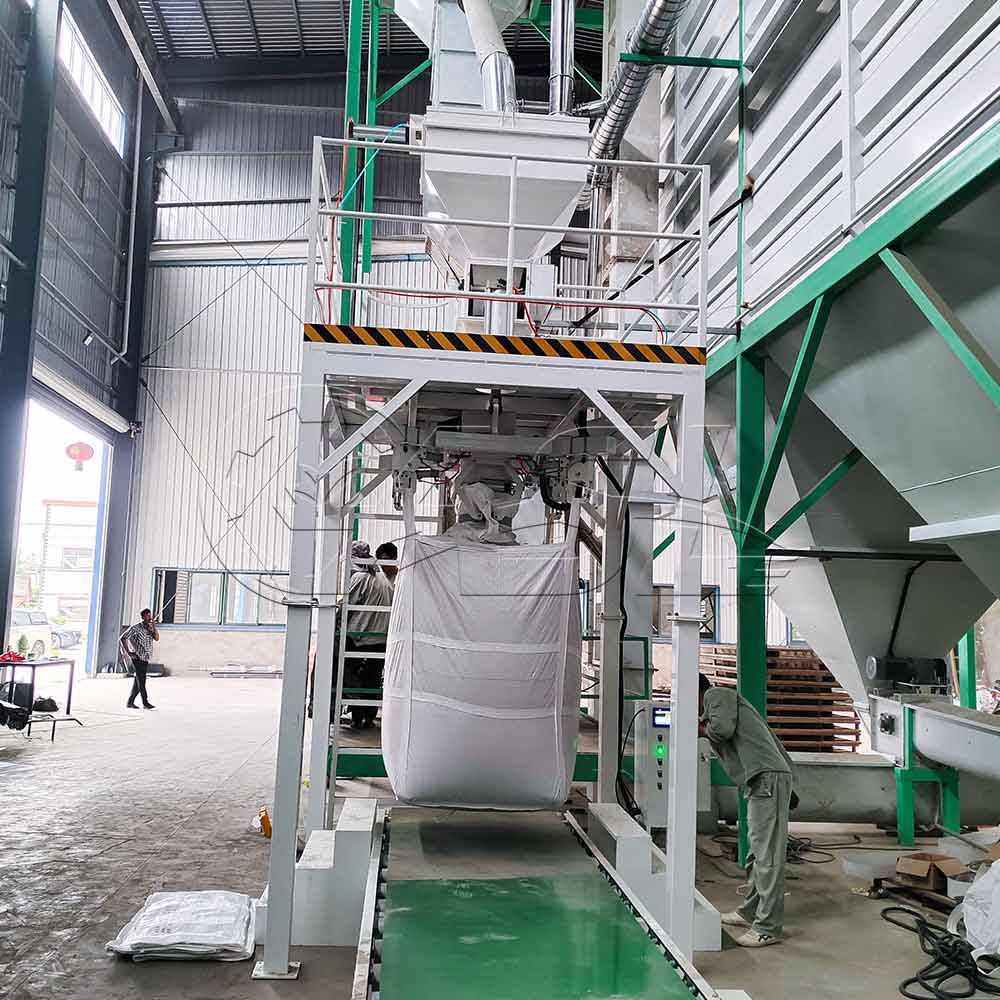
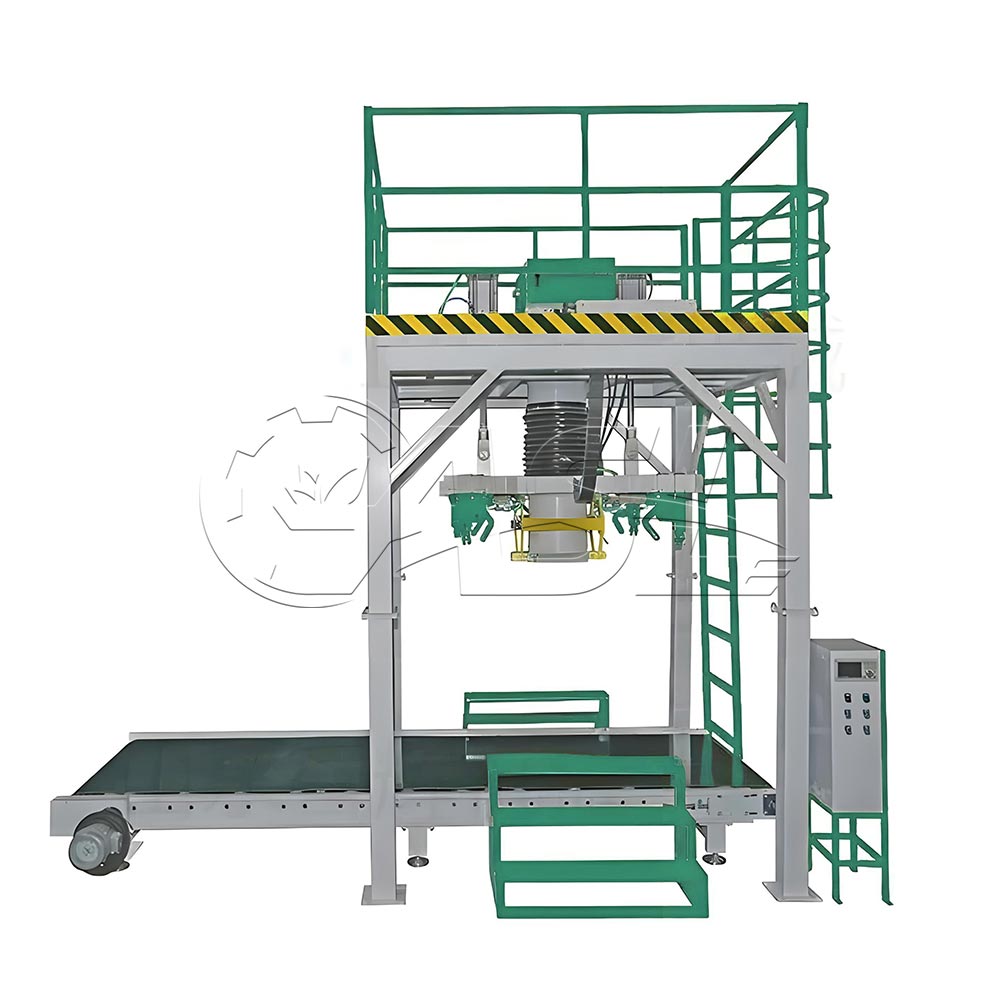




Feeding Device: Commonly used are single or double-auger feeders, feeding by weight. The feed rate is set using a variable frequency drive. Some systems incorporate a butterfly valve and pneumatic shift fork mechanism at the outlet to prevent material residue and bridging.
Weighing Platform: Utilizes high-precision, high-stability load cells and a dedicated force-transmitting connection mechanism with overload and position limiting functions to ensure accurate transfer of bag weight.
Lifting Mechanism: Typically powered by a pneumatic cylinder or hydraulic system, it raises and lowers the bag according to the filling level. After weighing, it lowers the bag to the ground or onto a pallet for easy access to subsequent processing.
Bag Hanging/Unloading/Clamping Device: Attached to the bottom of the lifting mechanism, it accommodates various-sized ton bags and provides manual or pneumatic bag hanging, clamping, and automatic bag unloading functions.
Air Filling/Return Air Removal Piping: Used to balance pressure within the bag and prevent dust from escaping. Some equipment also includes a dust removal system to reduce dust pollution.
Steel Structural Frame: Provides support for the equipment and ensures overall stability.
Application Areas
It is widely used in mining, chemical, building materials, grain, feed and other industries, and can be used to package sand, gravel, cement, gypsum powder, fly ash, coal, grain, and other materials.
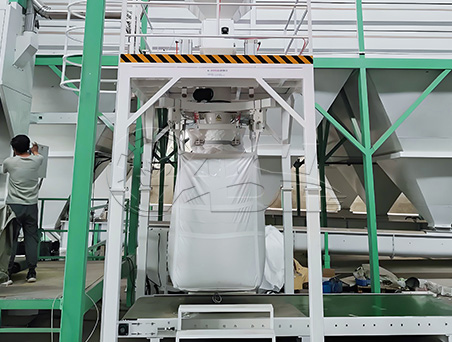
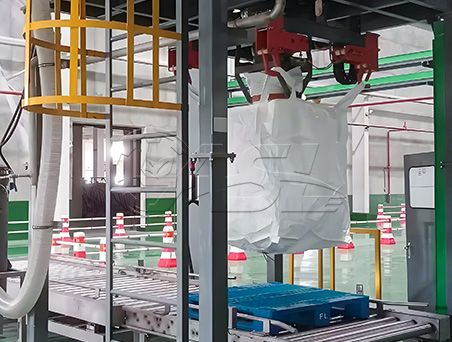
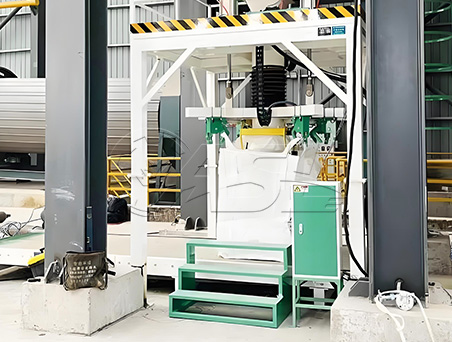
Working principle of Ton bag scale:
The ton bag is hung on the hook and suspended in the air by a pneumatic or hydraulic cylinder. The feeding system automatically adds material to the ton bag. The weighing system monitors the weight in real time and stops adding material when the set weight is reached. The pneumatic or hydraulic cylinder then lowers the ton bag, and the forklift takes the filled ton bag away, completing the packaging process.
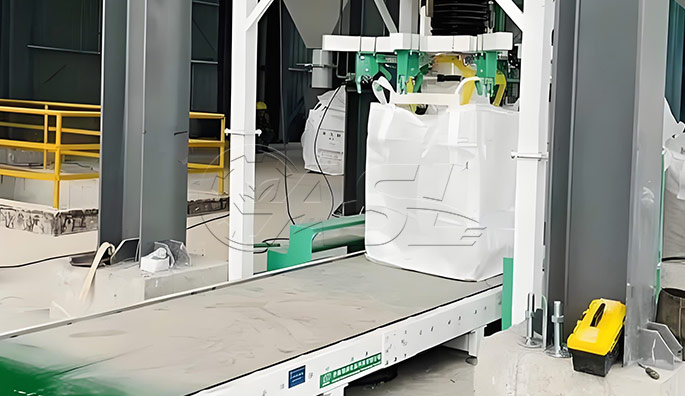
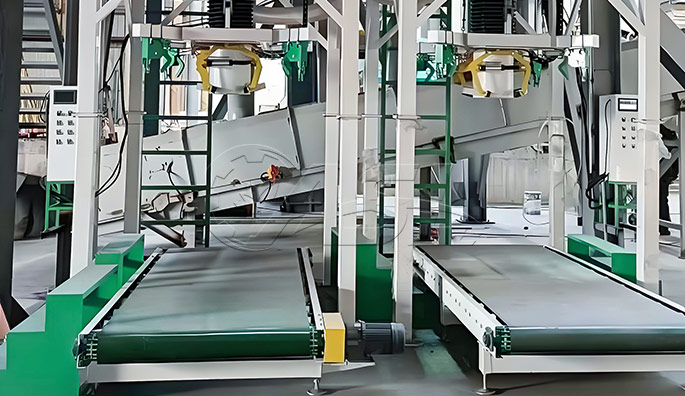
Advantages of Ton bag scale:
1. High Packaging Precision:
Adopting advanced weighing systems and feeding control technology, the weighing accuracy reaches ±0.1% to ±0.3%.
2. High Degree of Automation:
Except for manual bag hanging, all other processes, including weighing, metering, feeding, sealing, and conveying, can be operated unmanned, reducing labor costs.
3. High Adaptability:
Different feeding methods and equipment configurations can be selected based on material characteristics (e.g., granules, powders) and bulk bag specifications, adapting to a variety of materials and bag types.
4. Safety and Environmental Protection:
The enclosed dust removal design effectively reduces dust emissions. Some equipment also offers explosion-proof options to meet diverse production safety requirements.
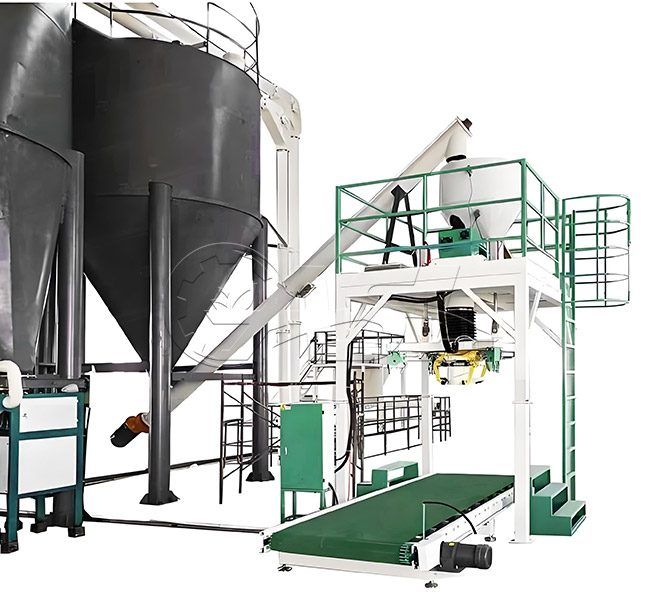
How do I choose the right bulk bag machine based on my material characteristics?
The key to choosing the right bulk bag machine is to match the material's physical properties with the equipment's capabilities. If the material is powdery (such as cement or talcum powder), a powder-type bulk bag machine with closed feeding, anti-bridging (vibration breaker/pneumatic fork), and return air dust removal is recommended to prevent dust from escaping. If the material is granular (such as plastic granules or ore), a granular bulk bag machine with a belt or double-screw feeder is preferred to minimize particle breakage. If the material is flammable or explosive (such as pulverized coal or calcium carbide powder), an explosion-proof model (explosion-proof motor, anti-static bulk bags, explosion-proof sensors) is essential. If the material is high temperature (such as high-temperature clinker), a high-temperature bulk bag machine with contact parts made of 304/316L high-temperature stainless steel and seals with a temperature resistance of ≥200°C is recommended.
What is the maximum weighing accuracy of a bulk bag machine? How can I address excessive errors?
The industry standard accuracy is ±0.1% to ±0.3% (e.g., the error for a 1000kg bag is ±0.1% to ±0.3%). For industries requiring high accuracy (1-3kg), such as food and chemicals, accuracy can reach ±0.1%. If the error is too large, first check three points: ① Is there any residual material on the weighing platform? (Clean any residue and recalibrate); ② Is the feeding speed too fast? (Slow down the "slow feed" phase and extend the refill time); ③ Is the weighing sensor offset or has loose wiring? (Reseat the sensor, check the connections, and recalibrate the equipment).
How to choose between a semi-automatic and a fully automatic weighing machine? What's the cost difference between the two?
The selection process should be based on production volume and labor costs. If daily production is ≤50 bags and the workshop has sufficient manpower, choose a semi-automatic weighing machine (manual bag hanging/unloading, core process automation), with a cost of approximately 50,000 to 150,000 yuan. If daily production is ≥100 bags, or if unmanned operation is desired (such as in large mines and power plants), choose a fully automatic weighing machine (integrated automatic bag loading, conveying, and stacking), with a cost of approximately 200,000 to 500,000 yuan. In the long run, a fully automatic machine can save 20,000 to 30,000 yuan. Employees (assuming an average monthly salary of 6,000 yuan per person, the difference can be recouped within 1-2 years).
Can the packaging speed of a ton-charter machine meet my production needs? How can I improve the speed?
The packaging speed of a conventional ton-charter machine is 5-30 bags/hour: 5-15 bags/hour for semi-automatic models, and 15-30 bags/hour for fully automatic models. If the speed is not satisfactory, three optimization options are available: 1. Upgrading the feeding method (e.g., switching from single-screw feeding for pellets to double-screw feeding plus belt feeding to improve efficiency during the rapid feeding phase); 2. Increasing the silo capacity (to avoid frequent refilling and interruptions to the packaging process); and 3. Optimizing the transition process.
Copyright 2025 Henan Nonghuilian Machinery Co., Ltd. Sitemap